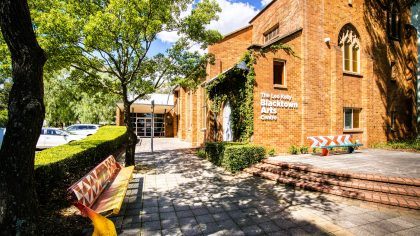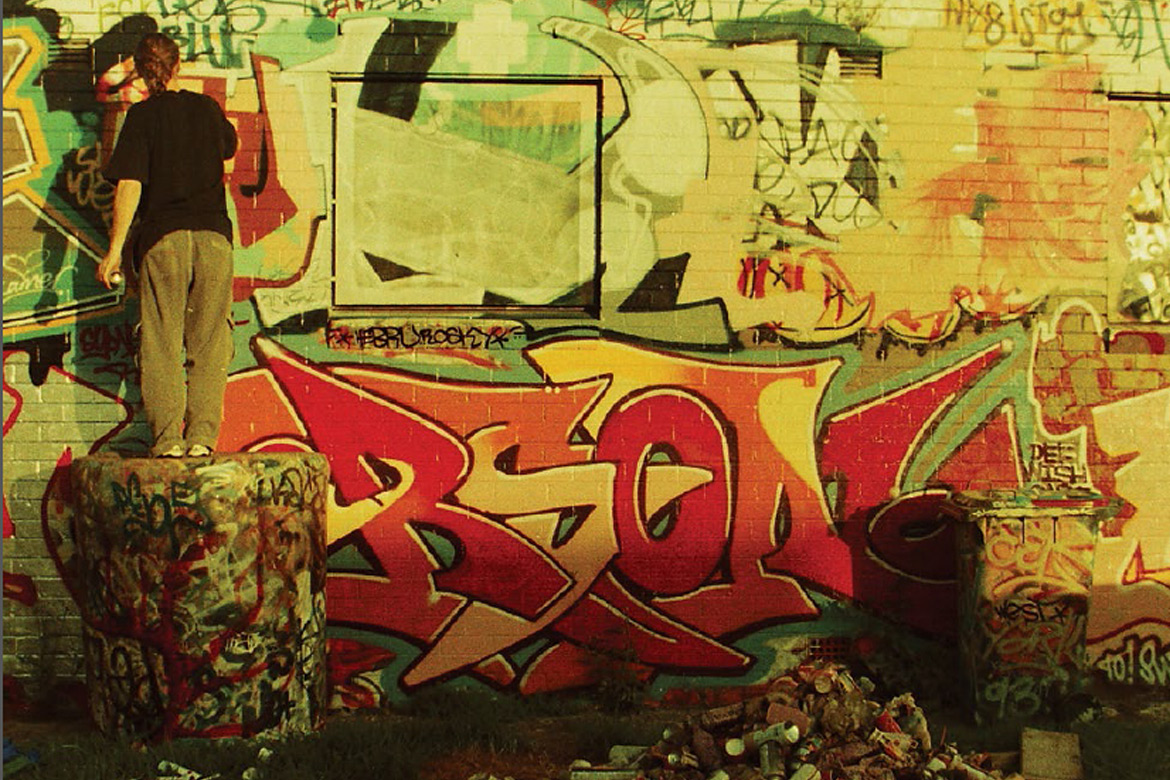
The Leo Kelly Blacktown Arts Centre
An innovative multi-arts hub in the heart of Blacktown City.
Bayadyinyang budyari Dharug yiyura Dharug Ngurra.
Bayady’u budyari Dharug Warunggadgu baranyiin barribugu.
Bayady’u budyari wagulgu yiyuragu Ngurra bimalgu Blacktown City. Flannel flowers dyurali bulbuwul.
Yanmannyang mudayi Dharug Ngurrawa. Walama ngyini budbud dali Dharug Ngurra Dharug yiyura baranyiin barribugu.
We acknowledge the Traditional Custodians of this Land, the Dharug people, and their continued connection to Country.
We pay our respects to Elders from yesterday to tomorrow.
We extend that respect to all Aboriginal and Torres Strait Islander Peoples of Blacktown City where the flannel flowers still grow proud and strong.
We will walk softly on this land and open our hearts to Country as the Dharug people have for tens of thousands of years.
Credit to: Dharug woman Rhiannon Wright, daughter of Leanne ‘Mulgo’ Watson Redpath and granddaughter of Aunty Edna Watson

On a weekend in May 1995, John Cheeseman and I hired a truck and collected all of Street Level’s assets and drove them to Casula Powerhouse Arts Centre in Liverpool where they remain. It marked the end of Street Level’s five-year period at 41 First Avenue Blacktown. It also initiated the third and final phase of Street Level as an artist-run initiative in Western Sydney.
This final phase was led by members Kathy Cleland and David Cranswick curating exhibitions and events across sites in Parramatta and the then-new Casula Powerhouse until 1998.
After the closure in 1983 of the Modern Art Gallery in Casula (run commercially by artist Alice Klaphake), there was no contemporary art space between Annandale and Penrith Regional Gallery & The Lewers Bequest in Emu Plains.
In 1988, the Campbelltown Bicentennial City Art Gallery came into operation, and Street Level was incorporated as a not-for-profit artist-run initiative, the first in Western Sydney. A part of Western Sydney University, it was established by about 30 former students of the Nepean College of the Arts, led by Katie Soady, Albertina Viegas, Diane Wallis and Atina Hrstic.
With funding from members and the Australia Council for the Arts, the new initiative rented a shopfront at 213 High Street Penrith, launching its first program in 1988 – an Albertina Viegas installation of bamboo and domestic implements as weapons evoking resistance and resilience in the face of the Indonesian invasion of East Timor.
From the outset, Street Level members wanted to connect the region to a network of artist-run initiatives nationally and internationally to engage with art and ideas. They also felt it was necessary to take up social issues of the time such as Aboriginal land rights, community television, the environment, vivisection, gay and lesbian equality and East Timorese independence. They tried new ways to present art to the community and to provide professional experience for artists and curators.
The second phase in Street Level’s history was the collective’s move to Blacktown. They leased a shopfront – a ‘bunker’ – with space to establish six artists’ studios and a gallery. The collective immediately engaged with the local hip-hop scene. They set up a legal wall for graffiti writers and an exhibition called Thrill to Chill which commissioned new graffiti writers to paint the gallery walls.
The constantly changing legal wall outside, and a new exhibition/events program inside every two weeks, established a constant aesthetic dialogue on Australian hip-hop and visual arts.
Over time, Street Level was run by voluntary curators and artists developing over 200 exhibitions and events. By various ingenious means, they all activated a collective awareness of arts culture in Western Sydney.
Text featured in the It’s Our Thing exhibition catalogue, available online at www.issuu.com/blacktownartscentre or at Blacktown Arts Centre.
Exhibition | It’s Our Thing: More History on Australian Hip-Hop
2 June – 6 August 2016 | Blacktown Arts Centre
Blacktown’s influential role in the history of Australian hip-hop takes centre stage in a vibrant new exhibition. It’s Our Thing revisits the emergence of this dynamic sub-culture in Blacktown in the 1990s and examines how the collaborative practices and styles of hip-hop culture influenced the work of contemporary artists Khaled Sabsabi and Minky Rawat. Sabsabi and Rawat present new and archival artworks, alongside works by some of the most iconic artists of the 20th century – Joseph Beuys, Pablo Picasso and Andy Warhol.